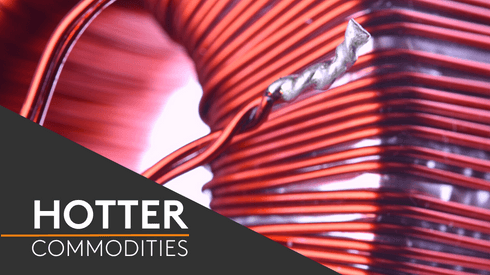“[The prices of] caustic soda and bauxite [feedstock] both jumped in April, and I know that some [producers] are having a hard time coping, particularly now – with the double-whammy from a softening alumina price,” a producer source said.
“I heard refineries in Henan province are on the brink of trimming production,” an alumina trader said on June 8, with evident concern about sizeable production cuts.
Bauxite and caustic soda are the key ingredients in the refining of alumina, and the prices of both have gone up since April, particularly in Shanxi and Henan provinces in northern China, where bauxite availability is tighter than in other regions.
The production cost there was now said to be higher than 2,900 yuan ($434) per tonne, with the local alumina price at a similar level, against the previous production cost of 2,700 yuan per tonne, Fastmarkets has heard.
The price of alumina has been softening since May, adding uncertainty to a weakening market. The domestic market was largely believed by market participants to be on a downward trajectory due to oversupply.
“If it’s not because of the high production costs, we could see a sharp fall in the alumina price,” an analyst source said.
Fastmarkets’ most recent price assessment for alumina, metallurgical grade, exw China, was 2,850-3,000 yuan per tonne on June 9, unchanged week on week but down from the year-to-date peak of 3,200-3,300 yuan per tonne in mid-February.
Bauxite tightness
Market participants attributed the rise in production costs largely to tightness in bauxite, particularly in northern China, although a recent increase in the price of caustic soda also added to market woes.
Market participants thought that the price of caustic soda would retreat after the end of the maintenance season, while constraints on bauxite would persist.
China is one of the principal bauxite-producing countries but its environmental and safety issues have been plaguing domestic mining production and choking bauxite supply.
Environmental inspections were normally more stringent in the more polluted areas in northern China, where the capital Beijing is located, and this goes some way to explaining the tighter bauxite supply and higher alumina production cost there than in other regions, sources said.
In April, the Central Commission for Discipline Inspection (CCDI) criticized illegal mining practices that resulted in environmental damage, citing a case in the bauxite-producing region of Hebei.
“We have seen the government shut down a number of small [bauxite] mines in the past, leaving just a few big miners to dominate the market, which explains the price rally,” an alumina trader said.
Consequently, the top producer of aluminium no longer relied on bauxite mined domestically, and was tapping into imports from other countries.
In 2018, China only imported 83 million tonnes of bauxite. This volume rose by 21.8% to 101 million tonnes in 2019, and by another 10.9% to 112 million tonnes in 2020, the country’s customs data showed.
But the seaborne market did not guarantee an easy time for alumina refineries either.
Two of the major bauxite exporters into China are Indonesia and Guinea. But in May, the Indonesian government confirmed a ban on bauxite exports this year. And in late April, Guinea warned that it might impose a similar ban if bauxite miners operating in the West African country did not live up to their obligations to build refineries there.
Fastmarkets’ latest price assessment for bauxite, fob Kamsar, Guinea, was $30 per dry metric tonne on May 19, the highest since April 2021.
A recent drop in the value of China’s yuan has also raised the import price for bauxite.
The Chinese foreign-trade currency was trading at 6.688 yuan to $1 on June 9, compared with 6.323 yuan to $1 on March 9, according to the exchange rate website Oanda.com.
Three ramp-ups, potential cuts
Three alumina refineries have come online this year, one each in the provinces of Hebei and Guizhou, and the Chongqing municipality. Market sources believed that these would result in total capacity of 77 million tonnes per year, which could put the market in surplus, but the simultaneously rising production costs were pushing refineries to hold off.
Their resistance might not have the desired effect, however, given alumina’s weak fundamentals. At some point, refineries could still go for production cuts, some market participants said.
“I’m worried that the high production costs could lead alumina refineries to cut production before we see a sharp fall in the alumina price, and this makes it hard to predict the market direction,” an alumina trader said.
“There is a possibility,” an alumina trader in Beijing said, “[that alumina refineries] will cut production in the future, but this won’t push the alumina market down yet, and it won’t happen until the market totally bottoms out.” He added that an alumina price of less than 2,800 yuan per tonne would be a watershed.
Nonetheless, some other market sources saw that possibility being realized, with consequences for cash flow.
Alumina refineries in China are mostly private businesses, so have limited access to credit lines, and their attempts to keep businesses running in the capital-intensive metals sector could limit the size of any production cuts, Fastmarkets heard.
“[Because] alumina refineries in China are mostly private,” a trader in Shanghai said, “profits might not be the decisive factor for cuts in production.”
To keep up with alumina and aluminium price trends throughout the year, visit our aluminium page.





